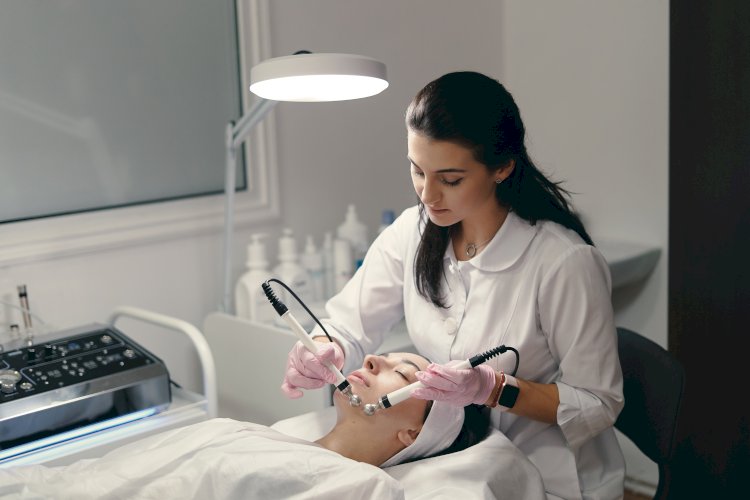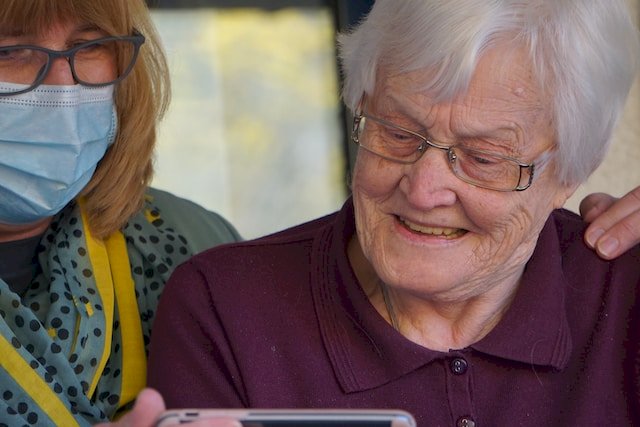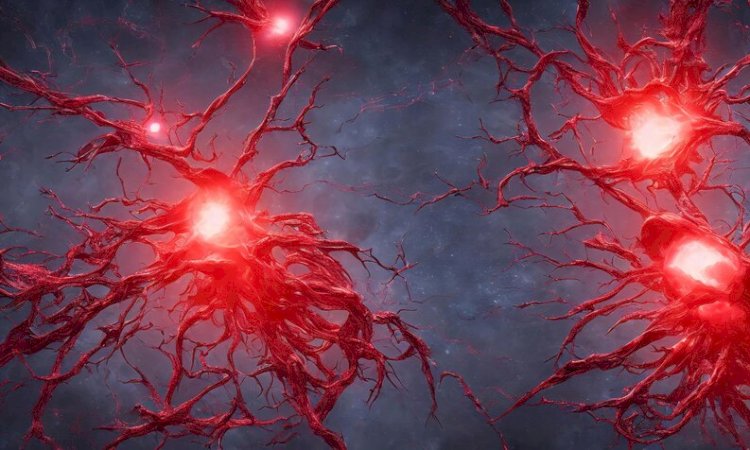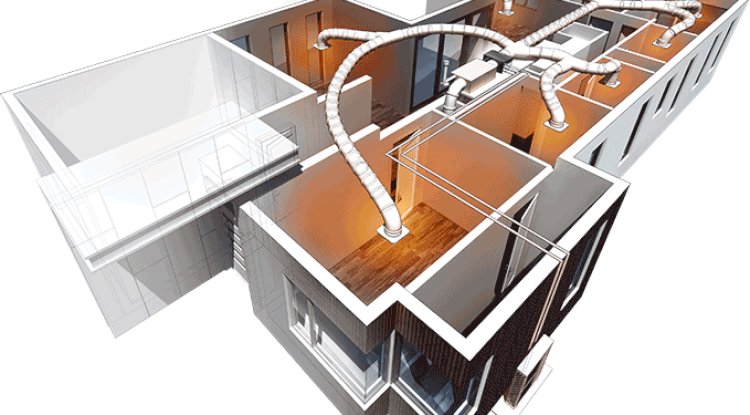Unravelling the Warning Signs of Skin Cancer: An Indispensable Guide from Experts

Introduction-
Background Statistics about Skin Cancer-
Welcome to our comprehensive guide about an issue that's at the forefront of health conversations globally: skin cancer. According to the World Health Organization, the incidence of both non-melanoma and melanoma skin cancers has been increasing over the past decades, with around 3 million non-melanoma and 132,000 melanoma skin cancers occurring every year. These figures stress an unmistakable need for diligent awareness and knowledge of skin cancer.
Importance of Early Detection-
Early detection of skin cancer has a profound impact on the prognosis and treatment outcomes. Caught in the early stages, the 5-year survival rate for melanoma skin cancer can be as high as 99%. On the caveat, undetected or late-stage detection dramatically lowers survival rates. Hence, understanding how to detect skin cancer signs early becomes crucial.
Purpose of The Guide-
This guide aims to deliver practical, evidence-based, and easily understandable information about skin cancer. We will delve into types of skin cancer, its causes, the role of UV radiation, and the key symptoms to watch out for. Additionally, we aim to assists you with understanding prevention, early detection, and treatment options.
Understanding Skin Cancer-
Types of Skin Cancer-
There manifest three primary types of skin cancer. Basal Cell Carcinoma (BCC) is the most common type, typically developing in sun-exposed areas, exhibiting as a pearly or waxy bump or a flat, flesh-colored lesion. The second is Squamous Cell Carcinoma (SCC), which often appears as a firm, red nodule, or a crusty, scaly lesion. The third, Melanoma, though much less common, is the most aggressive and dangerous type of skin cancer.
Causes and Risk Factors-
The prime cause of skin cancers is exposure to Ultraviolet (UV) light from the sun or artificial sources such as tanning beds. However, factors such as a personal or family history of skin cancer, fair skin, a history of sunburns, excessive sun exposure, living closer to the equator or at high altitudes, the presence of numerous moles, and immune-suppressing diseases or medications play a crucial role as risk factors.
The Role of Ultraviolet (UV) Radiation Exposure-
UV radiation, especially UVB, is the most significant environmental risk factor for skin cancer. The UV light damages the DNA in the cells of your skin leading to alterations in the way these cells grow and divide, igniting the development of skin cancer.
Knowing the ABCDEs of Skin Cancer-
The ABCDE mnemonic is a useful tool to help identify suspicious lesions that may indicate skin cancer.
Asymmetry-
Normal moles are symmetrical. If you draw a line through the middle, both halves should match. If not, it may be a sign of melanoma.
Border Irregularity-
Healthy moles have smooth, even borders, whereas melanomas usually have irregular, notched, ragged, or blurred borders.
Colour Variations-
A single mole having a variety of colours is a concern; healthy moles usually have a single shade of brown.
Diameter-
Melanomas are usually larger than 6mm in diameter, equivalent to the size of a pencil eraser, but they may be smaller when first detected.
Evolving-
Changes in size, shape, colour, elevation, or any other trait, or a new symptom such as bleeding, itching, or crusting, is a significant warning sign.
Common Early Signs of Different Skin Cancers-
Basal Cell Carcinoma-
Basal cell carcinoma often exhibits as a pearly or waxy bump or a flat, flesh-coloured, or brown scar-like lesion. You may also notice blood vessels or an indentation in the centre.
Squamous Cell Carcinoma-
Squamous cell carcinoma may appear as a firm, red nodule, or a flat lesion with a crusted, scaly surface. Usually seen on the face, ears, and hands.
Melanoma-
Melanomas can develop anywhere, including areas not exposed to the sun. They might develop in an existing mole, or they might form on 'normal' skin in various ways. The ABCDE characteristics are important clues here.
Non-Melanoma Skin Cancer-
Non-melanoma skin cancer usually appears as a growth that increases in size or doesn't heal, often developing a crust or a scab.
Beyond the ABCDEs: Other Early Indicators-
Non-Healing Sores-
A persistent sore that doesn't heal within three weeks or a sore that heals and then re-opens could be an early sign of skin cancer.
Redness and Irritation-
Persisting redness, swelling, or irritation, especially around a mole, might signal skin cancer.
Changes in Existing Moles, Warts, or Freckles-
Sudden or gradual changes in their size, shape, colour, or texture could be a warning sign.
Unusual Sensations: Pain or Itching-
Though skin cancer may not cause discomfort in the early stages, any persistent pain, itching, or tenderness of a lesion warrants evaluation.
When to Consult a doctor: Recognising Danger Signs-
It's recommended to consult a dermatologist if you notice a new skin growth, a bothersome change in your skin, a change in the appearance or texture of a mole, or a sore that doesn't heal within three weeks.
Prevention and Risk Management-
Sun Protection Measures-
Taking steps from early childhood to protect the skin from sun exposure, such as using sunscreen, covering the skin with clothing, and seeking shade during peak daylight hours, is crucial.
Regular Skin Checks-
Schedule skin checks at least once a year with a dermatologist. Regular self-examinations help you understand what is normal for your skin and notice any changes or new growths.
The Role of Lifestyle Changes-
Embracing a healthy lifestyle, including regular exercise, a balanced diet (seek foods rich in antioxidants), staying hydrated, and avoiding tobacco and alcohol can potentially prevent skin cancer.
The Diagnosis and Treatment Process-
Diagnostic Techniques-
Skin cancer diagnosis usually begins with a physical examination, followed by a biopsy where a small sample of the suspicious area is removed and sent for lab analysis.
Current Treatment Approaches-
Skin cancer management range from topical medications, minor surgery (excision, curettage and electrodessication, Mohs' Surgery), cryotherapy, to more advanced procedures like chemotherapy, radiation therapy, and immunotherapy.
The Critical Role of Early Detection-
Remember, early detection significantly increases the chances of successful treatment and survival rates.
Share
What's Your Reaction?
 Like
1
Like
1
 Dislike
2
Dislike
2
 Love
0
Love
0
 Funny
0
Funny
0
 Angry
0
Angry
0
 Sad
0
Sad
0
 Wow
0
Wow
0



















<a href="https://samirabdelghaffar.com/العضال-الغدي-adenomyosis/">العضال الغدي </a> العضال الغدي: ما هو، الأعراض، التشخيص، والعلاج ما هو العضال الغدي؟ العضال الغدي هو حالة مرضية تصيب الرحم، حيث تنمو أنسجة بطانة الرحم داخل عضلة الرحم. هذه الحالة تُسبب تضخم الرحم، وألمًا، ونزيفًا غزيرًا. ما هي أعراض العضال الغدي؟ ألم: ألم في أسفل البطن، خاصة خلال فترة الحيض. نزيف: نزيف غزير وطويل خلال فترة الحيض. ضغط: الشعور بالضغط في منطقة الحوض. الإمساك: صعوبة في التبرز. الشعور بالامتلاء: الشعور بامتلاء أسفل البطن. التبول المتكرر: الحاجة المتكررة للتبول. العقم: صعوبة في الحمل. كيف يتم تشخيص العضال الغدي؟ يتم تشخيص العضال الغدي من خلال: الفحص السريري: فحص الحوض من قبل الطبيب. الموجات فوق الصوتية: فحص الرحم باستخدام الموجات فوق الصوتية. التصوير بالرنين المغناطيسي: فحص الرحم باستخدام التصوير بالرنين المغناطيسي. الخزعة: أخذ عينة من أنسجة الرحم لفحصها. ما هي طرق علاج العضال الغدي؟ لا يوجد علاج شافٍ للعضال الغدي، لكن تهدف العلاجات إلى تخفيف الأعراض. وتشمل العلاجات: الأدوية: مسكنات الألم، ومضادات الالتهاب غير الستيرويدية، وحبوب منع الحمل، والهرمونات. الجراحة: استئصال الرحم، أو استئصال العضال الغدي. ما هي مضاعفات العضال الغدي؟ فقر الدم: بسبب النزيف الغزير. الالتصاقات: تكوّن نسيج ندبي داخل الرحم. العقم: صعوبة في الحمل. نصائح للنساء المصابات بالعضال الغدي: مراجعة الطبيب بانتظام: لمتابعة الحالة وتلقي العلاج المناسب. اتباع نظام غذائي صحي: غني بالحديد والفيتامينات. ممارسة الرياضة بانتظام: لتحسين الصحة العامة وتقليل الألم. الحصول على قسط كافٍ من النوم: لتحسين الصحة العامة وتقليل التوتر. ملاحظة: هذه المعلومات هي لأغراض التثقيف فقط، ولا تُغني عن استشارة الطبيب.
<a href="اعراض الورم الليفي ">https://samirabdelghaffar.com/اعراض-الورم-الليفي-تليف-الرحم-تشخيص/</a> أعراض الورم الليفي: ما هي وكيف يمكن تمييزها؟ مقدمة: الورم الليفي الرحمي هو نمو غير سرطاني في الرحم. ما هي أعراض الورم الليفي؟ نزيف مهبلي غزير: قد تعاني من نزيف مهبلي غزير أو فترات طويلة أو نزيف بين فترات الحيض. ألم في الحوض: قد تعاني من ألم في أسفل البطن أو الحوض. الشعور بالامتلاء في الحوض: قد تشعرين بالامتلاء في الحوض، مما قد يسبب صعوبة في التبول أو التبرز. الإمساك: قد تعاني من الإمساك بسبب ضغط الورم الليفي على الأمعاء. التبول المتكرر: قد تشعرين بالحاجة إلى التبول بشكل متكرر بسبب ضغط الورم الليفي على المثانة. الإجهاض أو العقم: قد تتعرضين للإجهاض أو العقم إذا كان الورم الليفي في مكان معين في الرحم. كيف يمكن تمييز أعراض الورم الليفي؟ الفحص الطبي: سيقوم الطبيب بإجراء فحص جسدي للرحم لتحديد وجود أي أورام ليفية. الأشعة فوق الصوتية: يمكن استخدام الأشعة فوق الصوتية لرؤية الرحم وتحديد وجود أي أورام ليفية. التصوير بالرنين المغناطيسي: يمكن استخدام التصوير بالرنين المغناطيسي لرؤية الرحم وتحديد حجم وموقع أي أورام ليفية. ما هي خيارات العلاج؟ المراقبة: قد لا تحتاجين إلى أي علاج إذا كانت الأعراض خفيفة. الأدوية: يمكن استخدام الأدوية للتحكم في النزيف أو تقليل حجم الورم الليفي. الجراحة: قد تحتاجين إلى جراحة لإزالة الورم الليفي إذا كانت الأعراض شديدة أو إذا كان الورم الليفي يسبب مشاكل أخرى. ما هي مضاعفات الورم الليفي؟ نزيف حاد: قد يؤدي النزيف الحاد إلى فقر الدم. الإجهاض أو العقم: قد يمنع الورم الليفي حدوث الحمل أو قد يؤدي إلى الإجهاض. التواء المبيض: قد يلتف المبيض حول الورم الليفي، مما قد يسبب ألمًا شديدًا. خاتمة: الورم الليفي الرحمي هو نمو غير سرطاني في الرحم. معظم النساء لا يعانين من أي أعراض، ولكن بعض النساء قد يعانين من نزيف مهبلي غزير أو ألم في الحوض أو الشعور بالامتلاء في الحوض. هناك العديد من خيارات العلاج المتاحة للورم الليفي، بما في ذلك المراقبة والأدوية والجراحة.
www
1
1